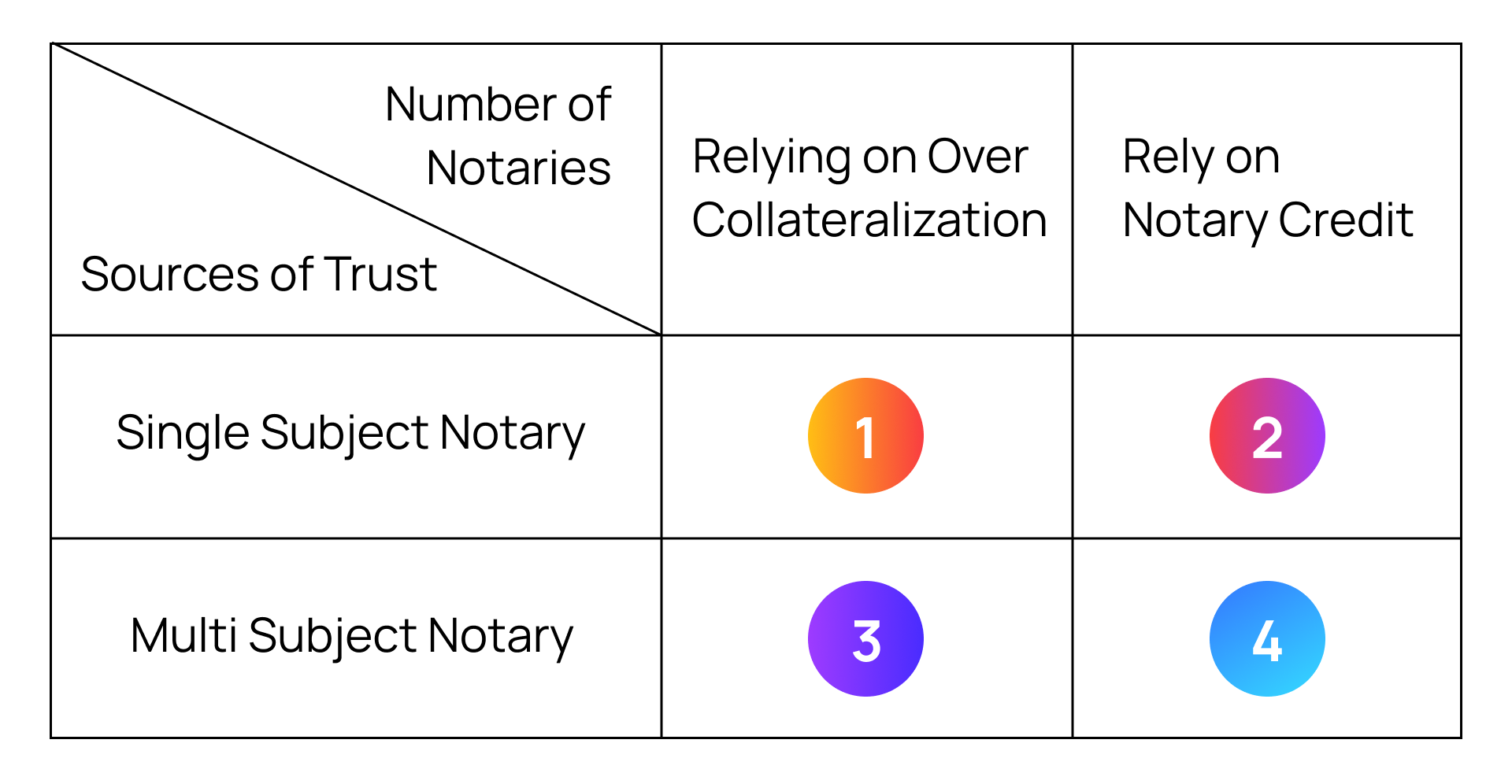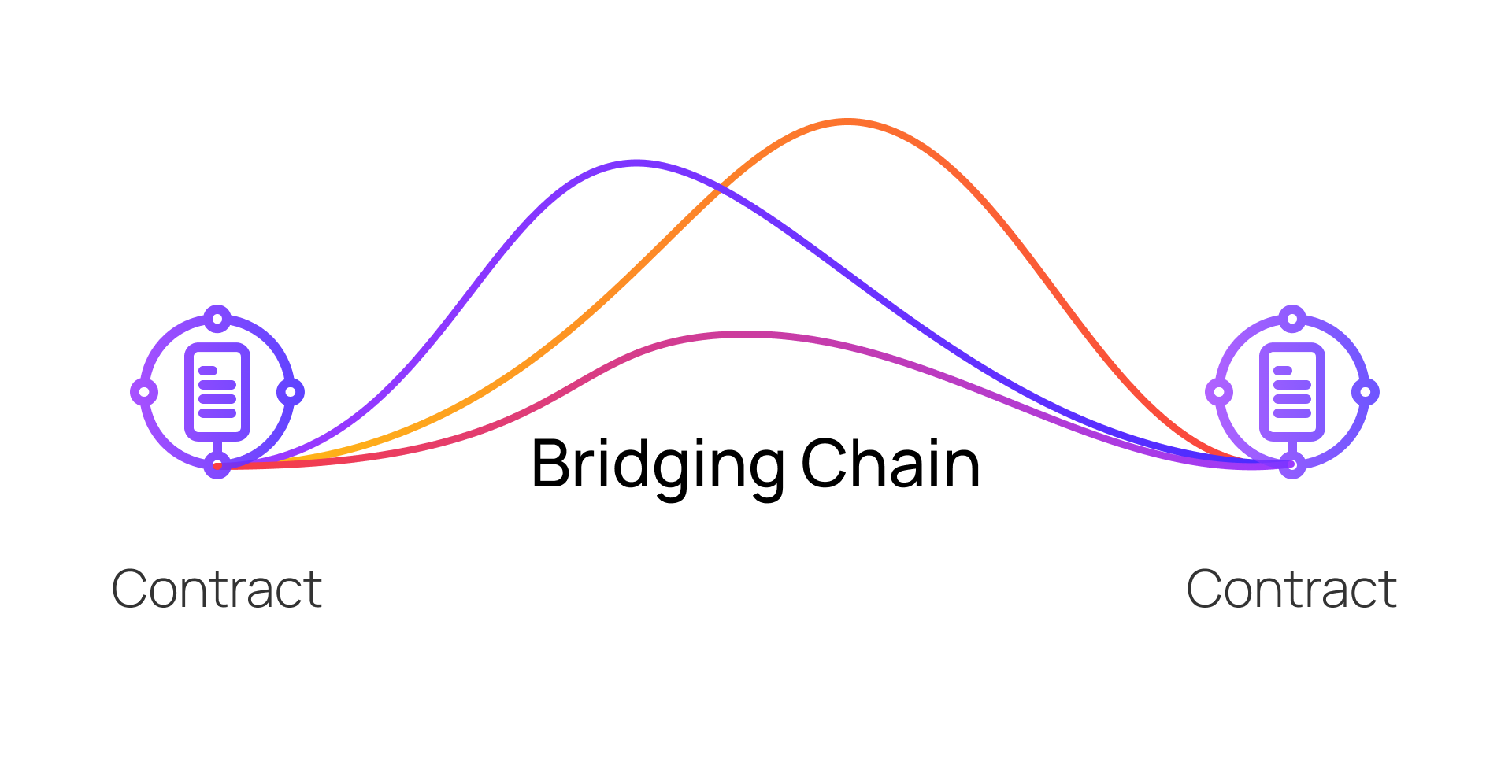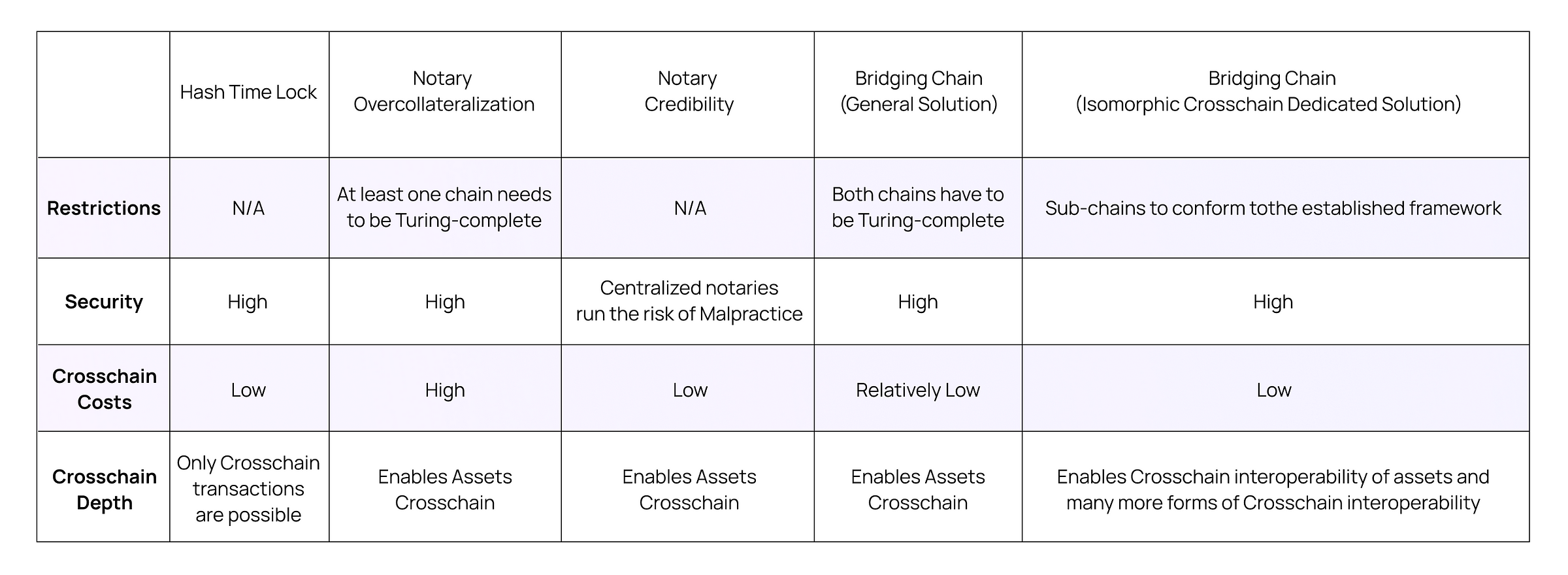A Brief History of Cross-Chain: From Asset Bridge to Interoperability
The goal of cross-chain at the beginning was to allow assets to be transferred from one chain to another, and back again safely, and later expanded to solve the problem of mutual transfer, transfer, and exchange of assets and states on two or more different chains. With the current maturity of cross-chain infrastructure, the hype for the cross-chain concept has cooled down, let’s take a grim observation of the existing cross-chain technology form.
Cross-chain technology is considered to be the holy grail of the development in the blockchain field and the key technology to realize the interoperability of all chains. Some of the current cross-chain technology forms are realizing asset interoperability, some are proposing a set of communication protocols to realize communication between blockchains, and some are proposing new system architecture and operating modes to support more blockchains Access.
According to the evolution and implementation of cross-chain technologies, Ethereum founder Vitalik once summarized 3 categories of cross-chain technologies, which are Hash Time Lock Contract (HTLC), Notary, and Side chain/Relay. We will further classify Notary, and Side chain/Relay into two sub-categories. In this way, we will introduce five cross-chain solutions respectively.
Hash Time Lock Contract (HTLC)
The hash time lock contract is a set of cryptographic methods to enable cross-chain trustless asset transactions, such as a transaction between A’s BTC and B’s ETH, to achieve atomicity of the transaction through a hash lock.
The principle is as follows: User A generates a random number s and calculates the hash of the random number h=hash(s) and sends it to User B. A and B lock their respective assets through the smart contract one after another. If A does not present s after the set time, the locked assets in the smart contract will be automatically returned to both parties.
Notary
The notary scheme means that the notary establishes an intermediate account, the user transfers assets to the intermediate account, and the notary issues a shadow Token to the user across the chain that maps the original Token. When the user needs to redeem, the shadow Token is destroyed and proof is provided to the notary. The notary will transfer the original Token in the intermediate account to the user’s address.
The notary must be credible. The notary can gain trust by relying on its own credit, or by making over collateralization through smart contracts. The notary can be a single subject, or it can be an alliance formed by a combination of multiple subjects through a certain combination of rules.
According to the single subject or multiple subject of the notary, and whether the source of the notary’s credit is over collateralization or his own credit, we can divide the notary scheme into 4 sub-categories:

Among them, HBTC, BTTC, and imBTC all belong to the ② scheme, tBTC belongs to the ③ scheme, X-BTC and WBTC belong to the ④ scheme, and the projects adopting the scheme ① have not been discovered yet. You may find that it is all Bitcoin cross-chain projects. Why is this the case? We will elaborate later in the comparative analysis.
We do not need to pay attention to the number of notaries. Therefore, we divide the notary scheme into two sub-categories according to the source of trust.
Over Collateralization
Notaries establish credit through over collateralization, which means that the assets v2 staked by the notary, must be greater than the value of the assets v1 in the intermediate account. When the notary conducts malicious or negligent behavior and causes the assets in the intermediate account to suffer losses, then the staked assets will be available to pay out to the lost users. However, over collateralization will impose capital costs on the notary, and these costs, will translate into high cross-chain handling fees, which will discourage users.
Self Credit
Notaries can also be endorsed by their own credit to make users trust. However, this kind of trust is centralized and deviates from the basic spirit of blockchain. However, this method still attracts a large number of users because of its low or even free processing fee. This kind of cross-chain method guaranteed by centralized institutions is also a good choice for users with small volume of cross-chain funds and low security claims.
Side chain/Relay
The third one is the side chain/relay scheme. Side chains and relays are actually the same concept, and a relay chain is equivalent to a side chain common to multiple chains. In order to simplify the expression, we will later unify them as bridging chain solutions.
We divide bridge chain solutions into two categories, namely general solution and isomorphic crosschain dedicated solution.
General Solution
The bridging chain generic solution, like the notary solution, still has an intermediate account, but the intermediate account is secured, not by a notary, but by a smart contract that regulates it. This means that the intermediate account will be a contract account whose asset management rules are governed by the code of the smart contract, rather than by the notary. If there is nothing wrong with the code itself, the assets in the contract are secure as long as the chain deploying that contract is secure.
Of course, if the bridge chain itself is faulty, it can also affect the security of the assets in the contract account. Therefore, the verifier has to Stake a certain value of Work Token to guarantee the safe operation of the bridge chain. Assuming this value is v3, then this v3 can be much smaller than the value of the assets v1 in the contract account.
Why can v3 be smaller than v1? Because the more common BFT-PoS type of consensus now almost eliminates “double spend” attacks that can tamper with the ledger (if the bridging chain ledger is tampered with, it may indirectly threaten the security of assets in the contract account), achieving stronger consensus security.
BFT-PoS can achieve instant certainty, not probabilistic certainty, even if the attacker has more than half of the Staking Work Token, the most he can do is to refuse to sign the block, so that the block sealing speed is slowed down, so that the network can not process the transaction, has formed the final certainty of the transaction in the block can not be reversed. We can assume that as long as the BFT-PoS chain does not have a code fault, no matter how small the Token market value is, it is safe.
Although malicious verifiers cannot shake the security of the assets in the intermediate accounts, the network is paralyzed and stopping verifying new transactions is not what we want to see. Therefore, v3 should not be too small. We still hope that the larger the Token market value of the bridge chain, the higher the staking ratio, and the higher the degree of decentralization, the better.
v3 can be smaller than v1, so there will be no high cross-chain fees associated with over collateralization, and using a cross-chain bridge will be very cheap to do. So is there any way to further reduce cross-chain costs? Some of you guys may think of making multiple chains reuse the same bridge, and this is the idea of Poly Network.
Isomorphic Cross Chain
A generic solution for bridging chains seems perfect enough! But we have a higher pursuit for cross-chain. One, a multi-chain reuse asset bridge can be compatible with as many existing chains as possible, but new chains keep emerging, it is too troublesome to expand the compatibility again, can there be a universal chain framework for new chains to follow the framework and be able to achieve cross-chaining once and for all?
Second, our pursuit of cross-chain is not just to achieve asset bridge, we also want to pass richer information between chains and have strong interoperability, such as the ability to call contracts across chains, so that multiple chains can really connect and form an organic whole.
Based on the pursuit of the above two, there are homogeneous cross-chain projects like Polkadot and Cosmos in the blockchain world. Both of them adopt the architecture of “1 parent chain + N sub-chains”, where the parent chain is the public bridge chain for all sub-chains, and any developer can develop sub-chains according to the prescribed framework and apply for access to the parent chain.
Cosmos parent chain is named Hub and child chains are named Zone. Through the built-in IBC protocol, Zone can communicate with each other across chains to pass both assets and information in other formats to achieve cross-chain interoperability.
Polkadot’s parent chain is called relay chain, and its children are called parachains, which communicate with each other through XCMP protocol to achieve cross-chain interoperability.
In fact, Polkadot’s relay chain not only plays a bridging role, but also allows the accessing parachains to share the security of its consensus layer, while for Cosmos’ Zone, the security of the chain is responsible for itself.
Contrast Analysis
While hash time locks enable atomicity for cross-chain transactions, they do not enable cross-chain circulation of assets. This means that a hash time lock allows a secure transaction between my BTC and your ETH, but does not allow BTC to circulate to ETH, nor does it allow ETH to circulate to the Bitcoin chain. However, hash time locks are the most versatile and have no restrictions on the properties of the chain.
A notary solution that enables asset cross-chaining between a Turing-complete chain and a non-Turing-complete chain. Of course, this asset cross-chaining is one-way, and can only be done from a non-Turing-complete chain to a Turing-complete chain. For example, introducing BTC into ETH, and vice versa, would not work for introducing ETH into the Bitcoin chain. This is not a limitation of the notary scheme.
In fact, notary solutions can also enable two-way cross-chain flow of assets between two Turing-complete chains, but because they are either more expensive (over-collateralization solutions) or tend to be more centralized (self-credit solutions), people are more likely to use bridging chain solutions.
One question mentioned earlier is why Bitcoin’s cross-chain has adopted more of a notary solution than a bridging chain solution. This is because Bitcoin chains are not Turing-complete. The reason why bridging chains can only cross chains between dual Turing-complete chains is that a bridging chain is not a standalone existence, but requires contracts deployed on both ends of the chain to cooperate, just like a bridge cannot exist suspended in the air, it must have piers on both sides of the bridge as a support.

In cross-chaining between dual Turing-complete chains, bridging chain solutions are more advantageous, mainly because they do not require over collateralization and can be reused across multiple chains, allowing for lower costs to cross-chain assets. Cross-chain projects like Polkadot and Cosmos directly build a new multi-chain architecture that goes beyond asset bridges and enables rich interoperability between homogeneous chains.
We have elaborated three major categories (five minor categories) of cross-chaining schemes, and we have made a table comparing the characteristics of each scheme.

There is a clear chronology in the order in which we have described the cross-chain solutions above. In May 2013, Nolan proposed the idea of atomic transfers in the BitcoinTalk forum. Later, people started building infrastructure to build asset bridges to allow interoperability between chains, in which Bitcoin, as the largest crypto asset by market capitalization, attracted many people who wanted to import Bitcoin assets to other chains, but since Bitcoin does not support smart contracts, people had to use a notary scheme.
Due to different concepts, some projects adopt a decentralized, costly over-collateralization scheme, and some projects adopt a simple and direct centralized custody scheme.
-
In order to reduce cross-chain costs, people have thought of a way to let multiple chains share a chain bridge.
-
In order to achieve compatibility with the new chain once and for all, people have formulated frameworks and standards for new chain development, such as Substrate and Tendermint.
-
In order to achieve more dimensional interoperability, people have created a homogeneous multi-chain architecture, such as Polkadot and Cosmos.
Nowadays, the blockchain cross-chain infrastructure is becoming more and more mature, so that people no longer talk about cross-chain, just like when we see the light on, we no longer talk about the principle of “electricity”.
Blockchain practitioners never stop thinking, never stop pursuing better solutions, and with their impetus, the blockchain world is evolving like a living creature toward more complexity and also simplicity.
Bifrost Insights
As the derivatives created by Bifrost must have sufficient liquidity to play its role of releasing liquidity of staked assets. Among them, whether the derivatives can circulate across chains is very important for their liquidity. vToken is necessary as a DeFi base asset to participate in other ecosystems besides the Polkadot ecosystem, especially the Ethereum ecosystem. There are already a number of ready-made bridging chains available from Polkadot to Ethereum, and there are plans to develop their own bridging chains as an alternative in Bifrost’s RoadMap.
As we all know, the blockchain industry has a very high premium for valuable new creations, and we have found that the environment in the blockchain industry is becoming more and more suitable for new creations, as the infrastructure is getting better and better and people don’t have to rebuild the wheels.
Bifrost focuses on its own business, keeps polishing and optimizing the product logic, and does a good job of releasing liquidity from staked assets. The bridging chain and Polkadot Substrate are the infrastructure for Bifrost. However, for those DeFi applications that use vToken as the underlying asset, how can Bifrost not be its infrastructure? This is how synergistic innovation is often cascading throughout the industry.
What is Bifrost?
Bifrost is the Polkadot Ecological DeFi basic protocol. It is committed to becoming an infrastructure for pledged assets to provide liquidity. Bifrost launched derivatives vToken for Staking and Polkadot Parachain Slot (Crowdloan). It has obtained $2.15M in fund-raising from NGC, SNZ, DFG, CMS and other institutions and Web3 Foundation Grant. It is also a member of Substrate Builders Program and Web3 Bootcamp.
vToken can optimize transactions in multiple scenarios such as DeFi, DApp, DEX, CEX, and realize the transfer channel of pledge rights such as staking and Crowdloan through vToken, realize the risk hedging of pledge assets, and expand scenarios such as vToken as collateral for lending, its staking reward part of the interest can be offset to achieve low-interest loans.
Learn more about Bifrost
Website | GitHub | Telegram | Medium | Twitter | Discord | SubSocial